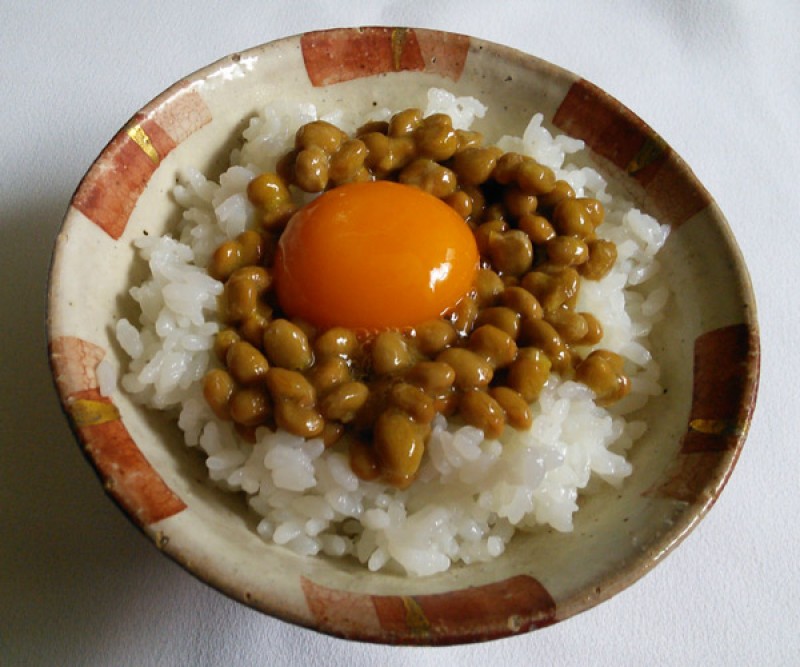Do you like to put raw egg in with your natto? Or do you prefer it without?
According to statistics, apparently 60% of people who consume natto prefer to add in raw egg. Aside from raw egg, there are many other ingredients people seem to enjoy mixed in with natto. When asking our college’s students, aside from the typical accompaniments of green onion and mustard, some also opined that Japanese ginger, kimchi, nameko mushrooms, and boiled seaweed make for a tasty pairing. In addition to seasonings that usually come with natto, such as soy sauce or Japanese shichimi red pepper powder, some students said they enjoy adding sugar, vinegar, or mayonnaise, and eating the natto atop of toast. Just hearing all of the different possibilities affirms that natto reflects the diversity of Japanese household cuisine.
Itohiki natto, known for it’s sticky and stretch consistency, can be considered a key component of a Japanese breakfast. Natto has a deep history, and the kanji for natto (納豆) can be traced back to Heian Period literature. In the Edo Period, where eating meat was not customary and fish was expensive, natto was a valuable source of protein in people’s diets. Being a fermented food, natto can rebalance our digestive health, as well as help prevent blood from congealing, making it one of many healthy foods regarded with pride in the Japanese diet. However, to the foreign palate, natto’s consistency is often too slimy, and many non-Japanese are put off by its pungent smell, so it’s usually ranked first as Japanese foods that are not appealing to foreigners. But that is not to say that even all Japanese people are fond of natto, as those in the Kansai region have an aversion to it. Natto is strongly associated as a regional food between Kanto and Tohoku.
As for me, I recommend eating natto with fish or vegetables, with an egg yolk mixed in. For the fish, I recommend tuna and squid; for the vegetables, I recommend using pickled radish, yams, cucumbers, or other vegetables with a crisp texture all cut uniformly. Then, I stir in an egg yolk and small amount of soy sauce, which I then eat all together wrapped in roasted seaweed. That way, the savory fish and natto combine with the aroma of the roasted seaweed, making the dish substantially more vibrant and delicious. Depending on the region, this preparation is also known as Five-Color Natto, or Natto Bomb. Please, give this combination a try.
**Source: Tokyo College of Sushi and Washoku: The College Headmaster’s One-Dish Course Series. **
https://www.sushi-tokyo.jp/blog-headmaster
Photo Source: Tokyo College of Sushi and Washoku: The College Headmaster’s One-Dish Course Series.
